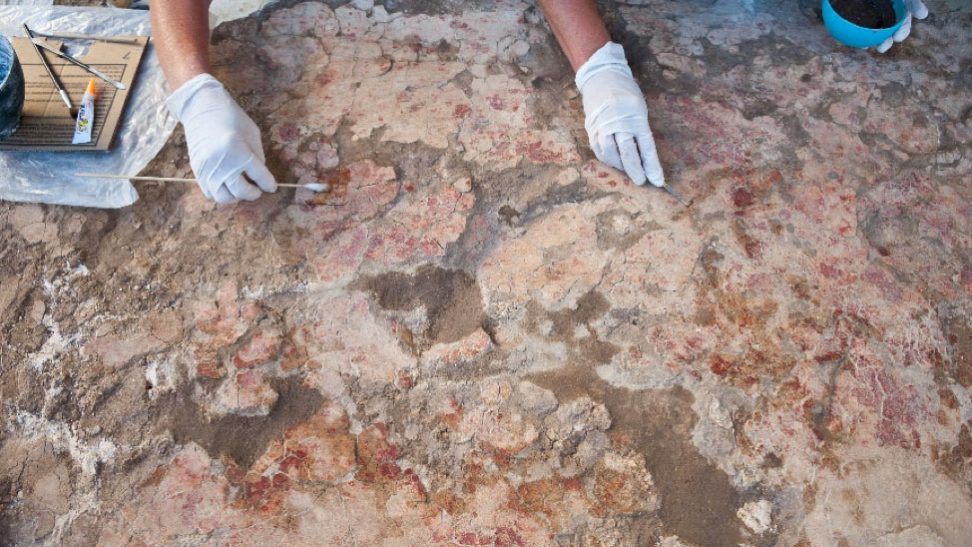
Almoloya-Bastida Project: discovering a Bronze Age civilization (Archaeology)
The object of study of the project is the society or “culture” of El Argar. The culture of the Argar has a protagonist role in the knowledge of the recent Prehistory in Spain, and is considered one of the most relevant cultures of the Bronze Age in Europe. The Argar is not just another archaeological culture. Its main characteristic was the establishment of acute political and economic inequalities, to the point of being qualified as one of the first States of Europe. Patrimonial, cultural and economic relevance.

Period
Bronze Age in the western Mediterranean, approximately between 2200 and 1550 BC.
Institution
Universitat Autònoma de Barcelona. Faculty of Philosophy and Arts. Department of Prehistory.
Web and social networks
http://grupsderecerca.uab.cat/asome/ca
http://www.la-bastida.com/inicio/index.html
http://www.elargar.com/inicio/
https://es-es.facebook.com/LaBastida.Totana/
https://www.ruta-argarica.es/
Principal Investigator(s)
Dr.Vicente Lull
Dr. Rafael Micó
Dr. Cristina Rihuete Herrada
Dr. Roberto Risch
Location
La Bastida (Totana, Murcia).
LOCATION
RESULTS
- Genetics and genealogy of the populations of the Iberian Peninsula. According to the dominant hypothesis, mostly male groups of warlike character originating in the northern steppes colonized Europe and replaced the ancestral male lineages from the third millennium BC. Our results question this interpretation in favor of a medium-term model of population replacement that emphasizes kinship relations and male dominance. Postmarital residence in women and men with relationship between consanguinity and access to wealth
- Agriculture, livestock and diet. – The community of La Bastida consumed cereals cultivated in dry land plots fertilized with animal fertilizer: the overlap between agriculture and livestock in subsistence production is noted for the first time. - The elite consumed a diet richer in meat: the social differences were also reflected in the diet. Infant mortality, weaning and women’s health
- Urbanism: the revolution of the cities.
Human agglomeration. With an extension of 5 hectares totally built, it housed a thousand inhabitants, was the most densely populated settlement in the Iberian Peninsula and the first to successfully confront the government of large communities.
Monumental fortification. The architecture and arrangement of the defensive elements of La Bastida make it a unique example in prehistoric Europe.
Large-scale water engineering and management. Integrated into the urban fabric of one of the districts of La Bastida, the largest water storage structure in European prehistory was fitted out: a pond with a capacity for more than 300,000 liters of water. In addition to this and other tanks, there is a subway aqueduct carved into the rock, more than 70 m long.
Capital or metropolis? The Bastide became a real capital that centralized food, raw materials and human resources in a territory of 3,000 km2. - The “First European Parliament”: the architecture of government and power Recent excavations at La Almoloya have brought to light one of the first sites in Europe to specialize in political activity. In this “Hall of Parliament”, a few dozen leaders governed the lives of thousands of people.
- Ideology, identity and spectacle: death at home. The society of El Argar offers the unique possibility of knowing both the living spaces and the tombs, located under the floor of the rooms. We have discovered more than 200 tombs. The study of skeletons and offerings reveals profound economic differences between people, and informs us about the importance of having been born a woman or a man: an unusual complexity for its time on European soil.
PICTURES
- New study suggests King Tut’s tomb artifacts are linked to mysterious Osiris ritual (Archaeology News 29/03/2025) - 10 April, 2025
- Many Medieval Manuscripts Found to Be Bound in Seal Skins from the Arctic (La Brújula Verde 09/04/2025) - 10 April, 2025
- Bronze Age cymbals unearthed in Oman reveal how music united prehistoric Persian Gulf cultures (Archaeology News 08/04/2025) - 9 April, 2025

























